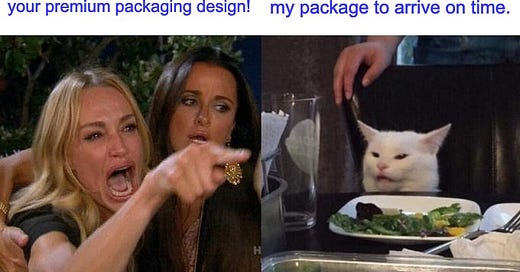Value: It’s Not What You Think, It’s What Your Customers Need
Value isn’t defined by what you think is important. It’s defined by what your customers see as important.
Hey Friend,
Let’s talk about something that often gets overlooked but is absolutely critical—value. Now, I’m not just talking about any kind of value. I’m talking about the kind of value that makes your customers nod in satisfaction, the kind that keeps them happy, and coming back for more. And here’s the kicker: Value isn’t defined by what you think is important. It’s defined by what your customers see as important.
Let me break it down with a simple example.
Fast Food vs. Fine Dining:
Imagine you’re hungry. Like, really hungry. You’ve got two choices: Fast Food or Fine Dining.
Fast Food: Quick, convenient, and easy on the wallet. It’s perfect if you’re in a rush or just need to grab something before heading back to work. Value here is all about speed and convenience.
Fine Dining: On the other hand, Fine Dining is a whole different ball game. It’s not just about the food; it’s about the experience—the ambiance, the service, the gourmet menu and the presentation. You’re not just paying for a meal; you’re paying for an experience. Value here is defined by the quality and experience.
Now imagine if you stopped by at McDonalds for a cheeseburger and you’re not served until after one hour, would that be valuable? Probably not. More like “slow food”. Conversely, if a fine dining restaurant started rushing you out the door, would that feel valuable? Definitely not. It all comes down to understanding what your customer values.
Phones for Different Folks:
Let’s switch gears. Imagine buying a smartphone. If you’re buying it for a teenager, what do they value? Probably the latest camera features, speed, storage for all those apps, and let’s not forget, a design that looks cool.
But if you’re buying a phone for a pensioner, their idea of value might be completely different. They might prioritize a large, easy-to-read screen, simple navigation, and long battery life.
Same product category, but the value proposition changes completely depending on who the customer is.
My Healthtech Experience:
I’ve seen this firsthand in my work in Healthtech. We had a product to connect certified healthcare professionals to open shifts at our partner facilities. At first glance, it seemed like we were delivering value by filling those shifts. But there was a problem—what happens when a worker claims a shift and then doesn’t show up?
For the healthcare facility, filling a shift wasn’t just about getting someone on the schedule—it was about ensuring that person actually showed up and worked. We missed the mark by not considering the full scope of what value meant to them.
Our data showed that although shifts were booked, but only a percentage of them were actually attended and worked.
Understanding this led to the creation of a new feature we called "Urgent Shift." This feature was designed to quickly fill shifts with reliable workers when there was a risk of no-shows. Suddenly, our partner facilities saw more value in our service because we were solving a problem they truly cared about. Not only filling shifts, but ensuring that the shifts were worked.
Why Should You Care About Value?
So why does any of this matter? Here are three reasons:
Customer Satisfaction: When you understand and deliver what your customers value, you create satisfaction. Satisfied customers are loyal customers.
Competitive Advantage: By focusing on customer-defined value, you can set yourself apart from competitors who might be stuck in their own ideas of what’s valuable.
Sustainable Improvement: Continuous Improvement isn’t just about doing things better; it’s about doing the right things better. And the right things are always aligned with what your customers value.
A Final Thought…
Value is a moving target. It changes as customer needs, trends, and the market change. The key is to keep your eyes open, listen closely, and always think from the customer’s perspective. When you start to see value through their eyes, you’ll find yourself naturally gravitating towards the kind of improvements that truly make a difference.
Until next time, keep improving—and remember, the customer is your best guide.
Best,
Tomiwa
Lean Process Improvement Enthusiast
(Taking it, One Newsletter at a Time…)






